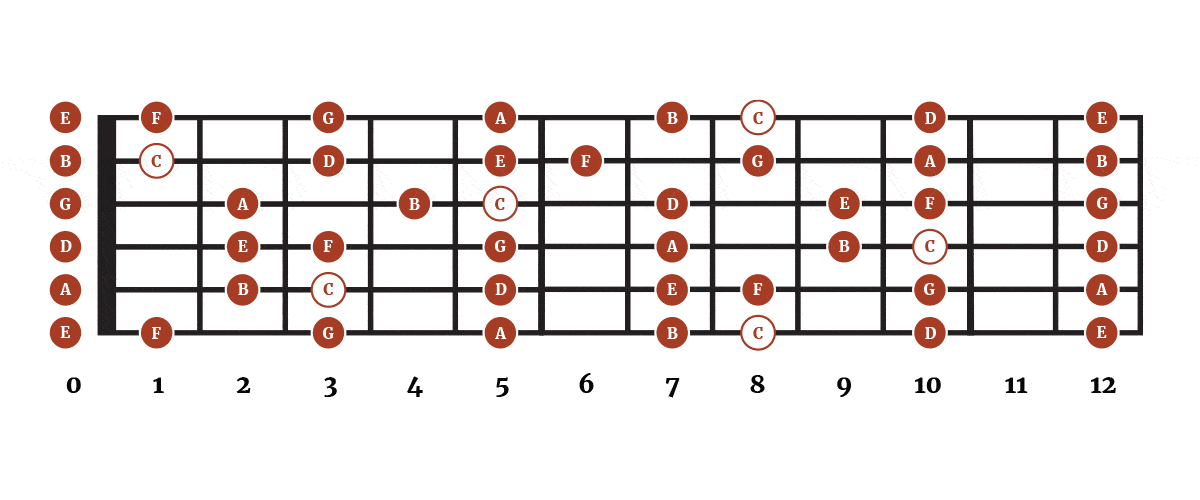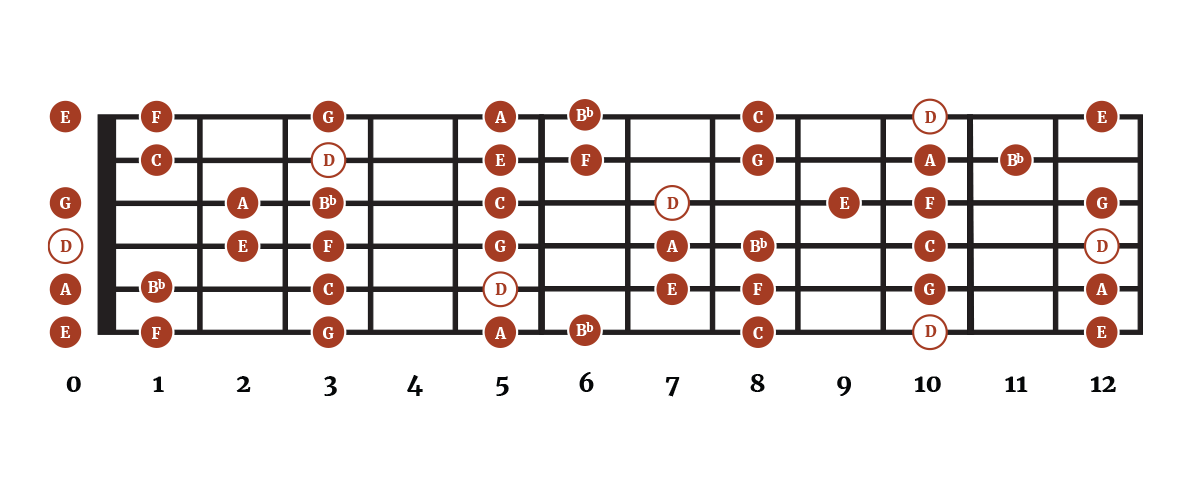The notes in the key of C Major are C, D, E, F, G, A, and B.

When assembled in order of pitch the notes form the C Major Scale.
The key of C has several interesting aspects for guitarists:
Simplicity
The key of C is one of the simplest keys to learn because it contains no sharp or flats (enharmonic notes) in its key signature making it simple to remember. It also consists entirely of open chords (chords that incorporate open strings on the guitar, which contribute to the key’s simplicity). In standard tuning, the open chords C, G, Am, F, Dm, and Em are all within the key of C. This makes it relatively easy for beginners to learn and play songs in this key.
Open-strings
6 of the notes in the key of C are open strings on the guitar. This allows guitarists to take advantage of the open strings, particularly when playing in the first position. Open strings create a resonant and ringing sound that can add depth and richness to chords and melodies.
Jamming with other instruments
The key of C is the most common key in music and aligns well with many other instruments. Many pieces of music are written in the key of C. This makes it easier to collaborate and play with other musicians.
The C Major Scale Step Pattern

The step pattern for the C major scale begins on C, followed by a whole step up to D, followed by another whole step up to the note E, and then a half step to F.
Next, we move a whole step up to G, before taking a whole step to A, and a whole step to B before finishing on a half step up to our tonic note of C in the next highest octave.
The C Major Scale
A C note can be found on the 8th fret of the 6th (E) string. As a result, the C major scale can be played beginning at the 8th fret (E caged shape), as indicated by the root note (white circle) below.

Keep in mind, this is just one example of how to play the C Major scale. Once familiar, try learning to play the C major scales in different positions on the neck.
Chords In The Key Of C Major
The chords in the key of all major scales follow the pattern of Major, minor, minor, Major, Major, minor, and Diminished.
In the key of C, this gives us the following chords:
C Major, D minor, E minor, F Major, G Major, A minor, B Diminished.
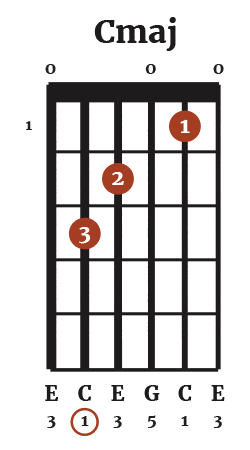


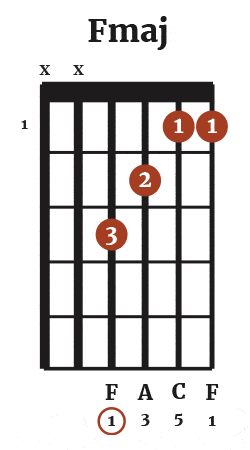
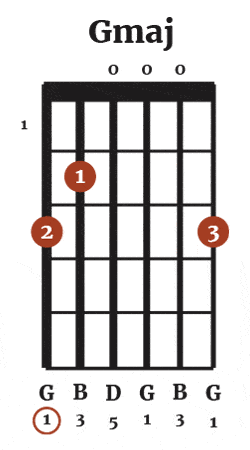

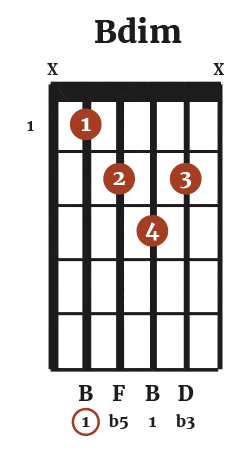
*Keep in mind, much like scales there are numerous ways to voice chords, the examples above are some of the easier chord voicings for each chord.
7th Chords in A Major
7th chords can be used in place of triads (major, minor, augmented, and diminished) to add more harmonic complexity to a chord progression. In the key of C major we have the following 7th chords available:
C Major 7, D minor 7, E minor 7, F Major 7, G Dominant 7, A minor 7, and B minor 7 flat 5.




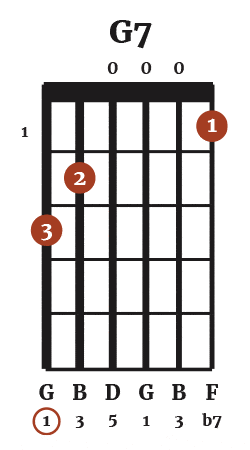
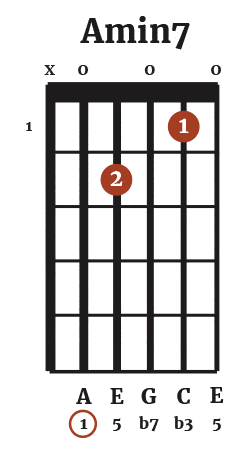
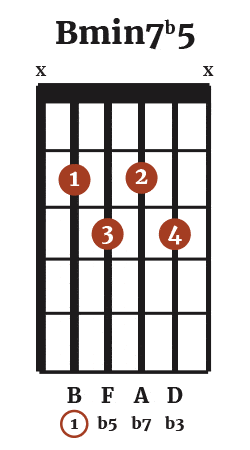
You can read all about 7th chords and how best to use them here.
Why Are These Chords In The Key Of C Major?
Each note of the C Major scale is the root note for one of the chords within the key of C. This gives us the root notes of C, D, E, F, G, A, B
As already noted, all chords built from a Major scale follow the pattern of:
Major, minor, minor, Major, Major, minor, diminished.
Assembling the notes of the C Major scale in this order we now have the quality of each of the chords in the key of C.
| Maj | min | min | Maj | Maj | min | Dim |
| C | D | E | F | G | A | B |
Chord Function
Chords existing within a specified key, C in this case, each hold a distinct function or role within that particular key. Grasping the nuances of these chord functions offers valuable insights into the interplay that gives rise to pleasing chord progressions, setting apart those that resonate harmoniously from those that may lack a similar appeal.
You can read more about chord function and the relationship between chords here.
| Tonic | Supertonic | Mediant | Subdominant | Dominant | Submediant | Subtonic |
| I | ii | iii | IV | V | vi | vii° |
| Cmaj | dmin | emin | Fmaj | Gmaj | amin | Bdim |
Common Chord Progressions In C Major
| I – V – vi – IV | Cmaj – Gmaj – amin – Fmaj |
| I – IV – V | Cmaj – Fmaj – Gmaj |
| I – vi – IV – V | Cmaj – amin – Fmaj – Gmaj |
| I – IV – vi – V | Cmaj – Fmaj – amin – Gmaj |
| I – V – vi – iii – IV | Cmaj – Gmaj – amin – emin – Fmaj |
Relative Minor

The relative minor key to C Major is A minor, which contains the same notes as C major, however, the sequence of notes begins on the 6th scale degree of the C Major scale.
A minor
| 1 | 2 | 3 | 4 | 5 | 6 | 7 |
| A | B | C | D | E | F | G |
Resources
- PDF download showing the notes, scales, and chords in the key of C Major.
- Learn how to read chord charts
- Learn how to read guitar tab
